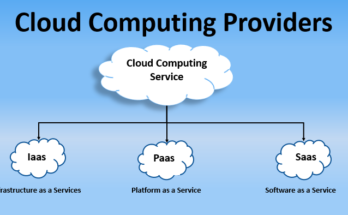The digital landscape is ever-changing, and web design is no exception. Designers, developers, and organizations must stay current on web design trends as we move towards 2023. This not only aids in developing attractive and useful websites but also guarantees that you keep one step ahead of the competition in this cutthroat market. The most appealing web design trends for this year are listed below.
1. Dark Mode
Dark mode has been a rising trend for a few years now, and it shows no signs of slowing down. Users are increasingly preferring dark mode for its eye-friendly and power-saving benefits. Web design in 2023 will see more websites offering a dark mode option, making it a standard feature rather than a novelty.
2. Minimalism
When it comes to contemporary web design, less is more. Minimalistic designs with plenty of white space, simple navigation, and straightforward typography are in vogue. This trend aligns with the user’s need for quick and easy information consumption without unnecessary distractions.
3. 3D Elements and Interactivity
With the advancement in web technologies like WebGL, 3D elements are becoming more accessible. These components increase the level of depth and interaction, giving users a more engaging experience. From product previews to interactive infographics, 3D elements are making a big splash in web design.
4. Scrolling Transformations
Scrolling is no longer just a way to navigate through a webpage; it’s becoming an interactive experience. Parallax effects, scroll-triggered animations, and even “scroll storytelling” are becoming popular methods to engage users as they scroll through a site.
5. Voice User Interface (VUI)
As voice-activated devices like Amazon’s Alexa and Google Home become more prevalent, websites are starting to integrate voice search and other voice-activated functionalities. Traditional web design is being pushed to its limits by this trend, making it more accessible and inclusive.
6. Sustainability and Social Responsibility
With the growing awareness of environmental and social issues, websites are starting to reflect these values in their design. This can be seen in the form of eco-friendly design practices, such as optimized performance to reduce energy consumption, or the inclusion of social responsibility messages in the website’s content.
7. Mobile-First Design
The mobile-first approach is not new, but it’s more important than ever. With the majority of web traffic coming from mobile devices, web design in 2023 is focusing on creating seamless experiences for mobile users. This includes responsive design, fast load times, and easy navigation optimized for smaller screens.
8. Micro interactions
Micro interactions are small, subtle animations or design elements that guide or engage the user. Whether it’s a hover effect on a button or a small animation that indicates a successful form submission, these details add polish and sophistication to a website, enhancing the user experience.
9. Inclusive and Accessible Design
Accessibility is becoming a focal point in web design, and rightly so. Now, website designers are concentrating on building accessible websites for everyone, including individuals with disabilities. This includes the use of ARIA (Accessible Rich Internet Applications) landmarks, keyboard-friendly navigation, and easily readable fonts. Inclusive design not only broadens your audience but also improves the overall user experience.
10. Data Visualization
As data continues to play a crucial role in decision-making, websites are incorporating more sophisticated data visualization tools. Interactive charts, real-time graphs, and other visual data representations are becoming common features, allowing users to interact with and understand complex data more easily.
11. Emotional Design
Web design is increasingly focusing on creating emotional connections with users. This involves the use of storytelling, impactful imagery, and thoughtful micro-interactions that evoke specific emotions or reactions. Emotional design aims to go beyond mere functionality to create memorable and meaningful user experiences.
12. Video Content
The use of video content in web design is not new, but it’s becoming more sophisticated. From background videos to video headers and interactive video elements, this form of media is being used in more creative and engaging ways. Video content can convey a message quickly and effectively, making it a powerful tool for storytelling and user engagement.
13. Cybersecurity Measures
With the increasing number of cyber threats, web design in 2023 is putting a greater emphasis on security features. To safeguard user data and foster trust, this involves the usage of HTTPS, secure data encryption, and other security best practices.
14. Multi-Platform Integration
As users continue to switch between various devices and platforms, web design is focusing on creating a seamless experience across all touchpoints. This involves the integration of various technologies, from social media and email to CRM systems, ensuring a consistent and unified user experience.
15. Modular Design
Modular design, which involves creating a website with reusable components, is becoming increasingly popular. This method is practical for both designers and business owners because it offers more flexibility and makes changes simpler. Modular design also aligns well with the principles of responsive and mobile-first design, ensuring a consistent experience across various devices.
16. Dynamic Loading and Lazy Loading
As page load time continues to be a crucial factor in user experience and SEO, web design is incorporating techniques like dynamic and lazy loading. These methods allow for quicker load times by only loading the essential elements first and then loading additional content as the user scrolls down the page.
17. Biometric Authentication
With security being a top concern, biometric authentication methods like fingerprint scanning and facial recognition are starting to make their way into web design. These features provide an extra degree of convenience and security, making it simpler for users to log in without having to memorize long passwords.
18. Virtual Reality (VR)
While still in its nascent stage for mainstream web design, Virtual Reality (VR) is starting to be integrated into some websites, particularly in industries like real estate and tourism. VR offers an immersive experience that can be a unique selling point for businesses looking to stand out.
19. Content Personalization
With advancements in AI and machine learning, websites can now offer personalized content based on user behavior and preferences. This level of personalization can significantly improve user engagement and conversion rates, making it a trend worth watching.
20. API-First Design
As the digital ecosystem becomes more interconnected, an API-first approach to web design is gaining importance. This means designing the API before the front-end or back-end, ensuring that different applications can easily communicate with each other from the get-go.
21. Localized User Experiences
As businesses aim to reach a global audience, localized content, and design elements are becoming more prevalent. This involves not just translating text but also adapting design elements to suit the cultural norms and expectations of different user groups.
Final Conclusion
Web design in 2023 is shaping up to be an exciting field, teeming with innovation and opportunities for creative expression. From technological advancements like AR, VR, and AI to a renewed focus on user experience through minimalism, emotional design, and inclusively, the trends are as diverse as they are impactful. Anyone working in web design or digital marketing has to stay on top of current trends. You’ll be better able to design websites that are not just aesthetically pleasing but also highly functional, secure, and user-friendly if you do this.




